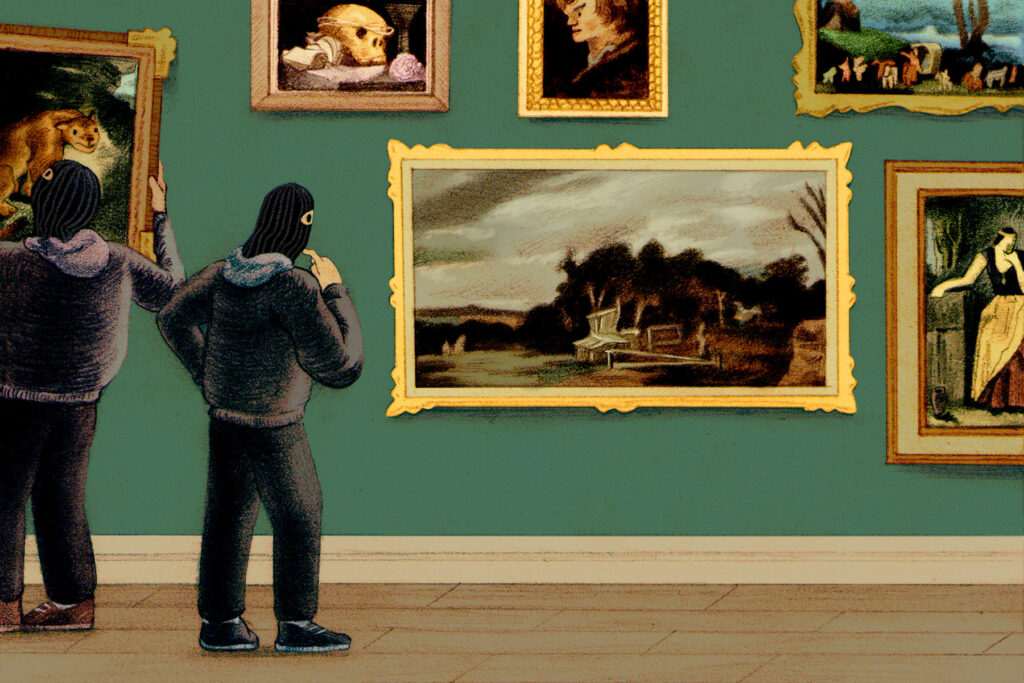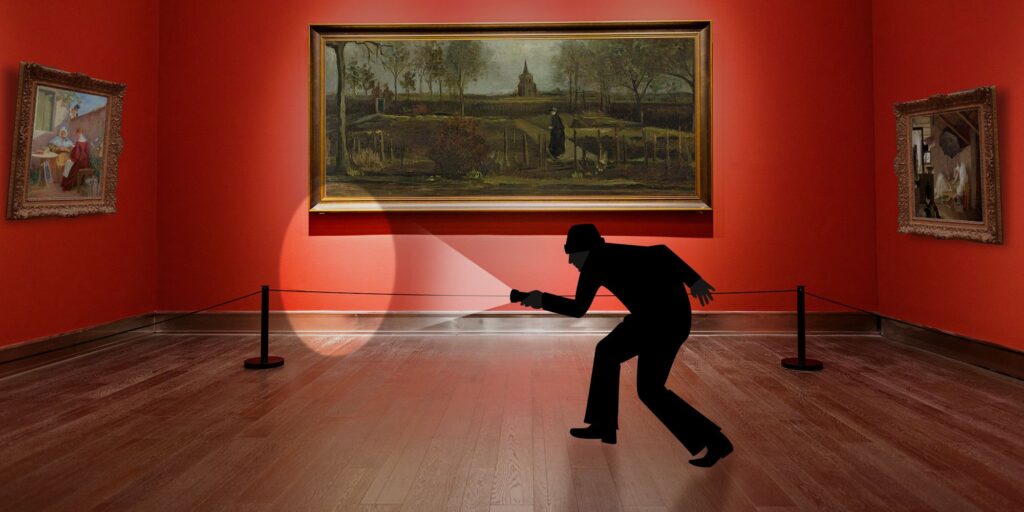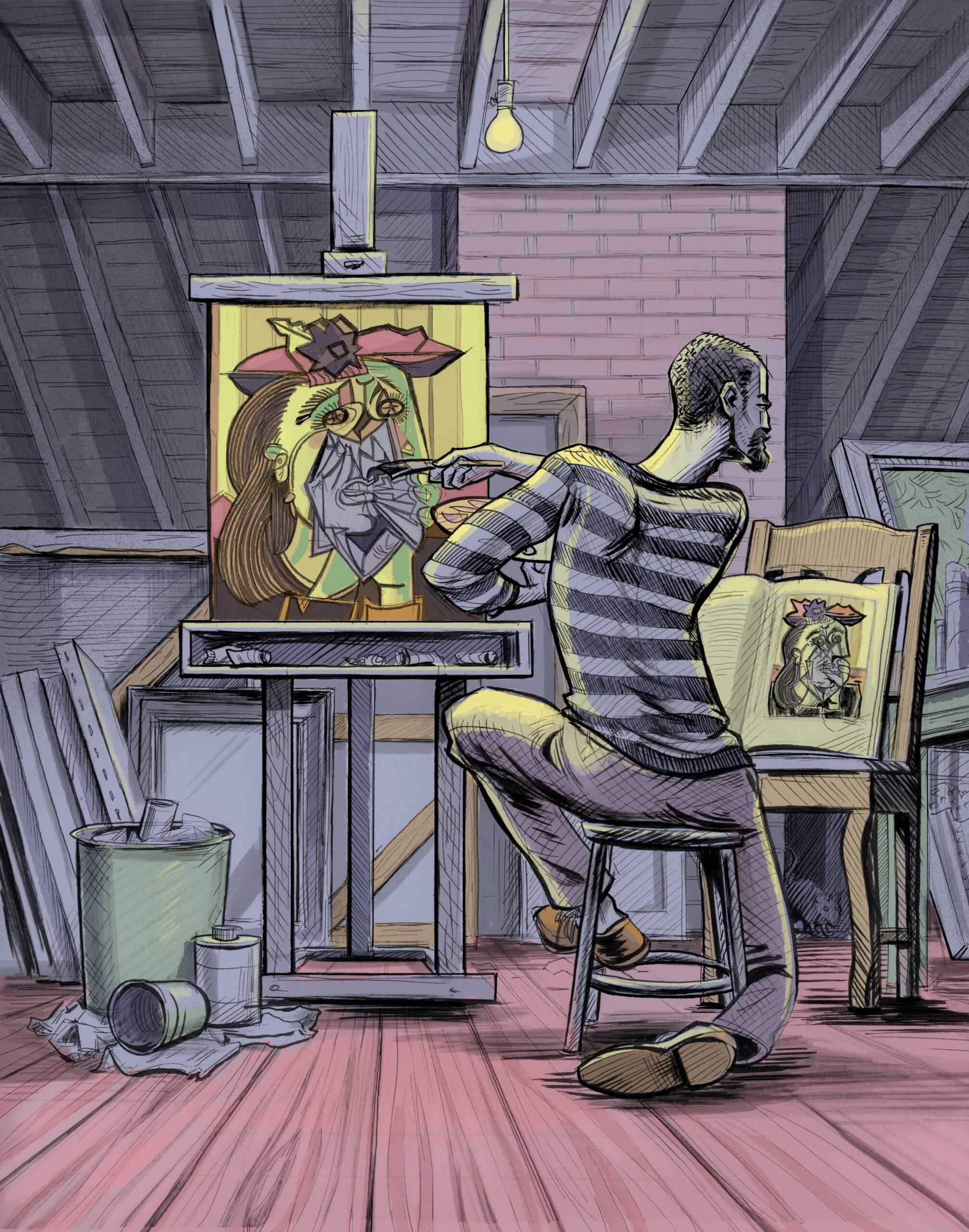
During the Spring 2025 semester of MST 460, a topics course in the Museum Studies program at Northern Arizona University, students applied their research on forgeries and thefts, specific cases, the art market, museum security, and methods of authentication to design their own theoretical art crime. Over the course of the semester, students produced a project proposal, a research paper, and a WordPress post with an infographic of their own design about their proposed “crime.”
The course prepared the students for the project through analysis of famous cases of criminal fakes, forgeries, and thefts, lectures about authentication practices and the art market as well as multiple guest speakers with insider knowledge and experience of art crimes in museums around the world ranging from museum professionals to retired law enforcement agents. While the students produced creative and thoughtful projects, they also conducted in-depth, college-level research to support their hypothetical motives and their plan.
To protect student privacy, names may have been changed.

The case studies informed the class about all factors of each art crime; who committed the crime (if known), what was the criminal’s motive, how did the criminal execute the fake, forgery, or theft, and what was the outcome of the crime.
Each case study taught us why learning about art crime is important; the public misses out on beauty and a wealth of historical and cultural information that criminals eliminate when they create forgeries or copies and when they steal works of art.
While lawyers and art crime task forces have resolved many of these cases, many fakes, forgeries, and thefts remain unsolved, with their perpetrators at large.
The course also covered the role of the art market, both legal and illegal, in art crime locally and globally. The class discussed these topics and case studies from a holistic point of view by understanding the roles of professionals in art history, museum studies, archaeology, law, journalism, and more. Additionally, the course delved into the ways that art fakes and forgeries are proved to be authentic or inauthentic through connoisseurship, scientific analysis, and provenance.

